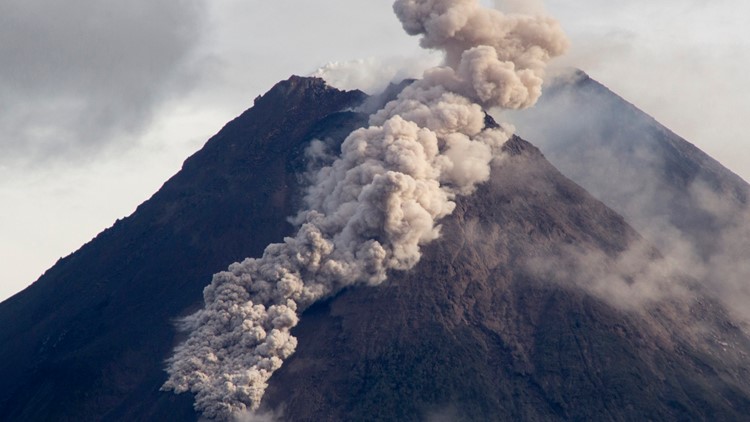Mount Merapi, the most active volcano in Indonesia, erupted Wednesday, sending a river of lava down its slopes and causing searing gas clouds to billow 10,000 feet (3,000 m) into the sky. As a result, heavy ashfall covered nearby villages on the island of Java.
The volcano steadily picked up in activity late in 2020, but the latest eruption has officials on high alert, and AccuWeather meteorologists say late-week downpours could increase the danger in the region.
As of Wednesday evening, local time, no deaths have been reported due to the blast, according to The Associated Press.
According to the head of Hanik Humaida, the head of Yogyakarta's Volcanology and Geological Hazard Mitigation Center, this is the largest eruption since the danger level was raised to a three for the region in November 2020. The numeric scale ranges from one to four with three being the second-highest threat level.
Yogyakarta is a major city located to the south of the volcano.
The volcano's lava dome is growing rapidly, causing hot lava to flow down its slopes, Humaida said, according to the AP.
Officials stated that sounds from the eruption could be heard 18 miles (30 km) away.
As the volcanic activity began to increase late last year, officials evacuated around 2,000 people living on the slopes of the Magelang and Sleman districts. Since then, most residents have returned to their homes, the AP reported.
However, more than 150 residents, mostly elderly, living within 3 miles (5 km) of the crater had to be evacuated on Wednesday as rainfall turned the ash that covered nearby towns into muck. A barracks was set up for those seeking shelter.
Rounds of rain and thunderstorms are not uncommon in Indonesia as tropical moisture is abundant across the islands.
Showers and thunderstorms are expected to develop across Java on Thursday and can even become heavy at times late in the day and overnight, said AccuWeather Senior Meteorologist John Gresiak.
Daily showers and storms are forecast to return to the area through at least the weekend, Gresiak added.
Any downpours can increase the risk for flash flooding and mudslides in the areas around Mount Merapi, especially where ash has fallen.
There have also been several earthquakes reported across Indonesia, including a 4.8 magnitude quake which occurred near southern Sumatra on Wednesday afternoon, local time.
Earthquakes and volcanic eruptions are common in Indonesia as the archipelago is located on the Ring of Fire, an arc around most of the rim of the Pacific Ocean where seismic and volcanic activity frequently occurs.
According to the AP, the last major eruption of Mount Merapi occurred in 2010. A total of 347 people died as a result of that eruption.



